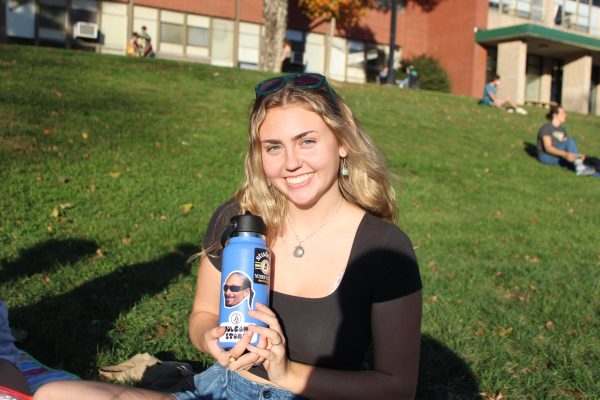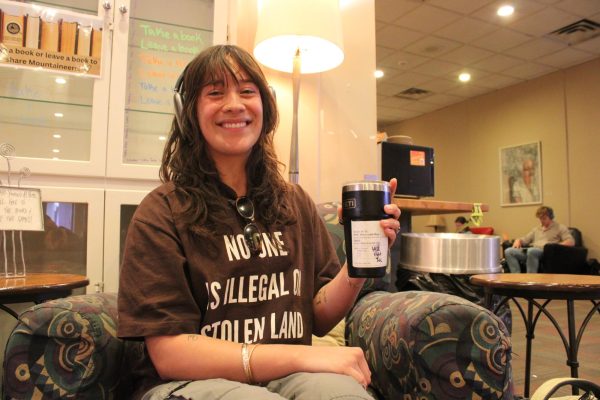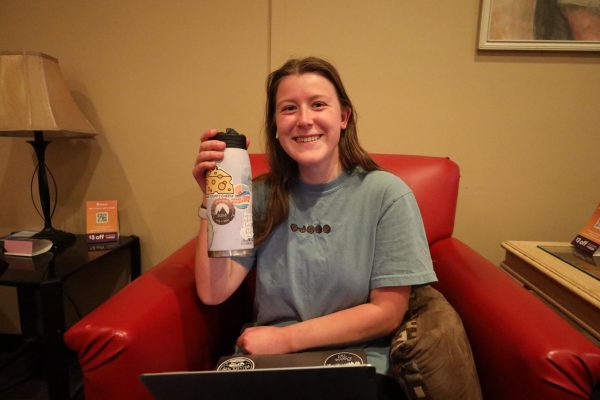Similar to how humans changed and evolved over millions of years, water bottles have evolved from primitive disposable plastic to the indestructible Nalgene, Stanley, Owala and beyond. The answer to the reusable water bottle craze extends beyond mere trends and into environmentalism.
Sydney Blume is an App State alum and adjunct instructor of sustainable development. She said the history of bottled water started with plastic disposable water bottles around the 1980s.

“People used to just drink out of the tap and also not carry around bottles,” Blume said. “The bottled water industry was basically able to create a market out of something and convince people that they needed it when they definitely didn’t.”
With the high amount of waste from disposable water bottles, Blume said reusable alternatives were a good pivot to prevent unnecessary plastic waste. However, she and her students have noticed the practice becoming commercialized over time.
“When it turns to collecting a bunch or having a new trendy water bottle every season that people are switching out, that’s something pretty new and definitely harmful,” Blume said.
Blume said the problem with excessively buying anything, including reusable water bottles, is not only the materials and labor that are required to make products but also where they go after people are done using them.

“A lot of the time we don’t see, ‘When I throw this away, where does it go? What happens to it? Even if I try to recycle it, does it get recycled?’” Blume said.
For some at App State, their water bottles end up in various lost and found boxes all across campus. Most students have seen the collection of water bottles at the front desk of the Plemmons Student Union.
Kelly Russell, a senior psychology major who works the front desk at the student union, said the lost and found is referred to as the “water bottle graveyard.”
“We kind of run it on an honor system,” Russell said. “If you see your water bottle, you just grab it. I’ve only noticed it, like a few times, not a lot.”

Russell said most of the water bottles end up staying in the graveyard and over the semester, the pile grows and grows. The fate of the lost water bottles after the academic year ends is ambiguous. Russell said some staff members take unclaimed bottles and some are given away to students, but as for the rest, she doesn’t know.
It is not all bad news for reusable water bottles, however, Blume said. The culture around water bottles can be consumptive, but it can also be expressive with people decorating their water bottles with stickers that show their personality.
“There’s also been rising increase in the understanding of how important hydration is,” Blume said. “Carrying a water bottle allows you to hydrate gradually throughout the day rather than getting all of your water at specific points.”
For those worried about their consumer practices, Blume encourages them to be more thoughtful when making purchases as a first step.

“Taking the time to reflect on the life cycle of an item before purchasing it is just something I encourage with anything,” Blume said. “Like, if you already have a bottle, do you need another? If you’re going to get another, how long are you going to use it? Once you stop using it, what’s going to happen to that thing?”
Blume said the system is not entirely the fault of the consumers, but they do have power to contribute to waste. Making small choices and steps toward a less consumptive lifestyle is an easy way to make a difference, she said.


